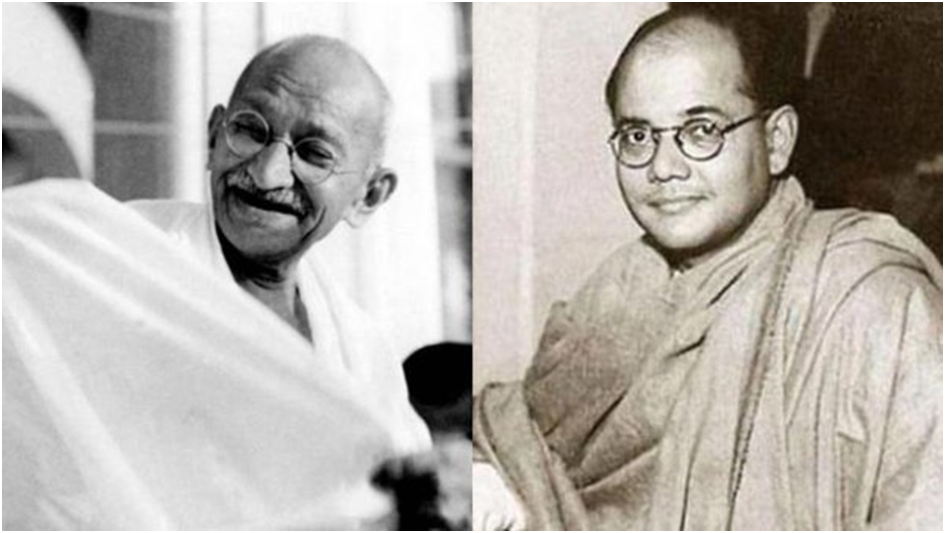
QUES . Highlight the differences in the approach of Subhash Chandra Bose and Mahatma Gandhi in the struggle for freedom.UPSC 2016 G S MAINS PAPER 1
HINTS:

Mahatma Gandhi and Subhas Chandra Bose are seen as the main architects of India’s freedom struggle. However, their difficult relationship during that times is still discussed today. While Gandhi advocated non-violence, Subhas Chandra Bose was very well- known for his radical and militant methods to make India independent. Although he was an integral part of the Indian National Congress, his views were very different from Mahatma Gandhi’s.
Differences in the approach of Subhash Chandra Bose and Mahatma Gandhi
• Bose believed complete independence could only be achieved through armed revolution against the British by Indian nationalist forces. On the other hand Gandhi staunchly adhered to the ideology of ahimsa (non-violence) and led civil disobedience movements like Non-Cooperation Movement, Salt Satyagraha etc.
• When the Non-Cooperation Movement was called off by Gandhi after the Chauri Chaura violence, Bose was one of the many who criticised his move. According to Bose, the order of retreat just when public enthusiasm was reaching the boiling point was nothing short of a calamity.
• While Bose’s beliefs involved an armed revolution and taking help from Japanese and European forces, Gandhi opposed them vehemently.
• Bose formed the Indian National Army (INA) and sought help from Nazi Germany and Japan to overthrow the British militarily. Gandhi organized non-violent mass movements involving boycotts, strikes, and violation of unjust British laws.
• Bose wanted to grab the opportunity provided by the second world war for India’s freedom, thus approaching Germany, and Japan while Gandhi saw fascism and Nazism a greater danger to Indian polity and society thus co-operated with British. Thus they had a different understanding of the same event
• Bose was firmly against the partition of India on communal lines, calling it a British conspiracy. Gandhi reluctantly agreed to partition to avoid large-scale Hindu-Muslim riots, though this turned out to be a devastating compromise.
• Bose envisioned a socialist authoritarian model of development for a free India, while Gandhi wanted a decentralized village-based economy supporting cottage industries.
• Religious teachings had great importance in the life of Gandhi while Subhash Chandra Bose was a leftist and rationalist.
• Gandhi made great efforts to unite Hindus and Muslims to fight colonialism, through platforms like the Khilafat Movement. Bose was focused solely on military conquest of the British.
Must read: Approach towards education and nationalism : Mahatma Gandhi vs Rabindranath Tagore
External link: https://www.hindustantimes.com/india-news/mahatmabose-disagreement-was-based-on-mutual-selfrespect-101706574741777.html
